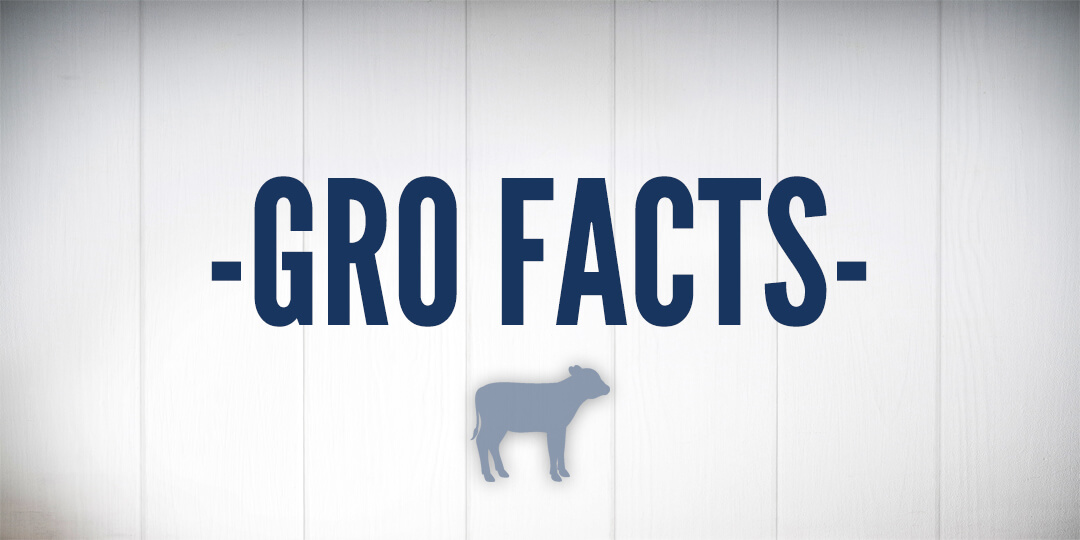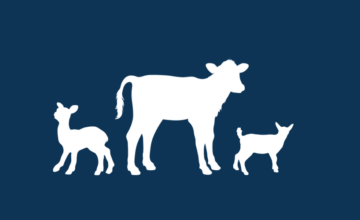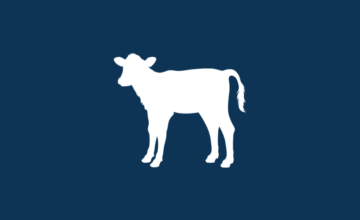Grain Veal Typical Growth
- Mar 31, 2009
- By Grober Nutrition
- In Canada, USA
The aim of beef production is to produce a high quality product with maximum efficiency. Factors that affect the carcass composition and carcass yield are:
- Weight and age
- Genotype
- Gender
- Growth rate and nutrition
- Conformation
A typical growth curve involves a self-accelerating phase of weight increase from birth to puberty of the animal. During this phase, growth hormones are mainly responsible for the growth process. The second phase of growth (puberty to adulthood) has lower rates of weight increase and is controlled mostly by the different sex hormones. Relative growth of different body parts, tissue types, etc. take place according to an allometric growth equation. The development order is consistent with survival of the animal in the early stages of life. I.e. brain, bone tissue, muscle tissue and fat will develop in this order. Low fat levels in the young calf, due to its young age, can have serious implications in its survival and growth rate potential. Distribution of muscle weight, together with bone and fat proportions, will determine the quality of the carcass. Quality of the meat product is a function of maximum edible yield (muscle and fat) with minimum waste (bone and excess fat) according to consumer preference. Knowledge of growth patterns and factors affecting them can be used for effective economic meat production. Holstein calves fed as grain-fed veal represent the most uniform group of cattle marketed in the beef industry. The nutrient requirements for grain-fed veal have not been researched to the extent of the other animal species. The key to successful growth rates is to plan a feeding strategy from birth for every stage of rearing to match a breeds genetic potential. Growth rates are also affected by the environment and health status.
TYPICAL GAINS FOR VEAL CALVES: GROBER VG MILK REPLACER
| Week | Live- weight (kg) | AverageVG powder (g/day) | Av. Calf starter (22%) (g/day) | Energy allowable gain (kg/day) | Protein allowable gain (kg/day) |
| 1 | 40 | 500 | – | 0.3 | 0.3 |
| 2 | 45 | 600 | 50 | 0.43 | 0.4 |
| 3 | 50 | 750 | 200 | 0.67 | 0.59 |
| 4 | 55 | 750 | 400 | 0.74 | 0.68 |
| 5 | 60 | 750 | 500 | 0.74 | 0.73 |
| 6 | 65 | 500 | 1000 | 0.74 | 0.78 |
Grober Nutrition
Recent Posts
Tags
Archives
- April 2024
- January 2024
- December 2023
- October 2023
- September 2023
- August 2023
- June 2023
- December 2022
- November 2022
- October 2022
- August 2022
- July 2022
- June 2022
- May 2022
- April 2022
- March 2022
- February 2022
- January 2022
- August 2021
- February 2021
- September 2020
- June 2020
- April 2020
- May 2017
- April 2017
- October 2016
- September 2016
- August 2016
- March 2016
- March 2015
- January 2015
- December 2014
- December 2013
- September 2013
- May 2013
- January 2013
- December 2012
- November 2012
- March 2012
- March 2011
- February 2011
- November 2010
- August 2010
- December 2009
- November 2009
- March 2009






